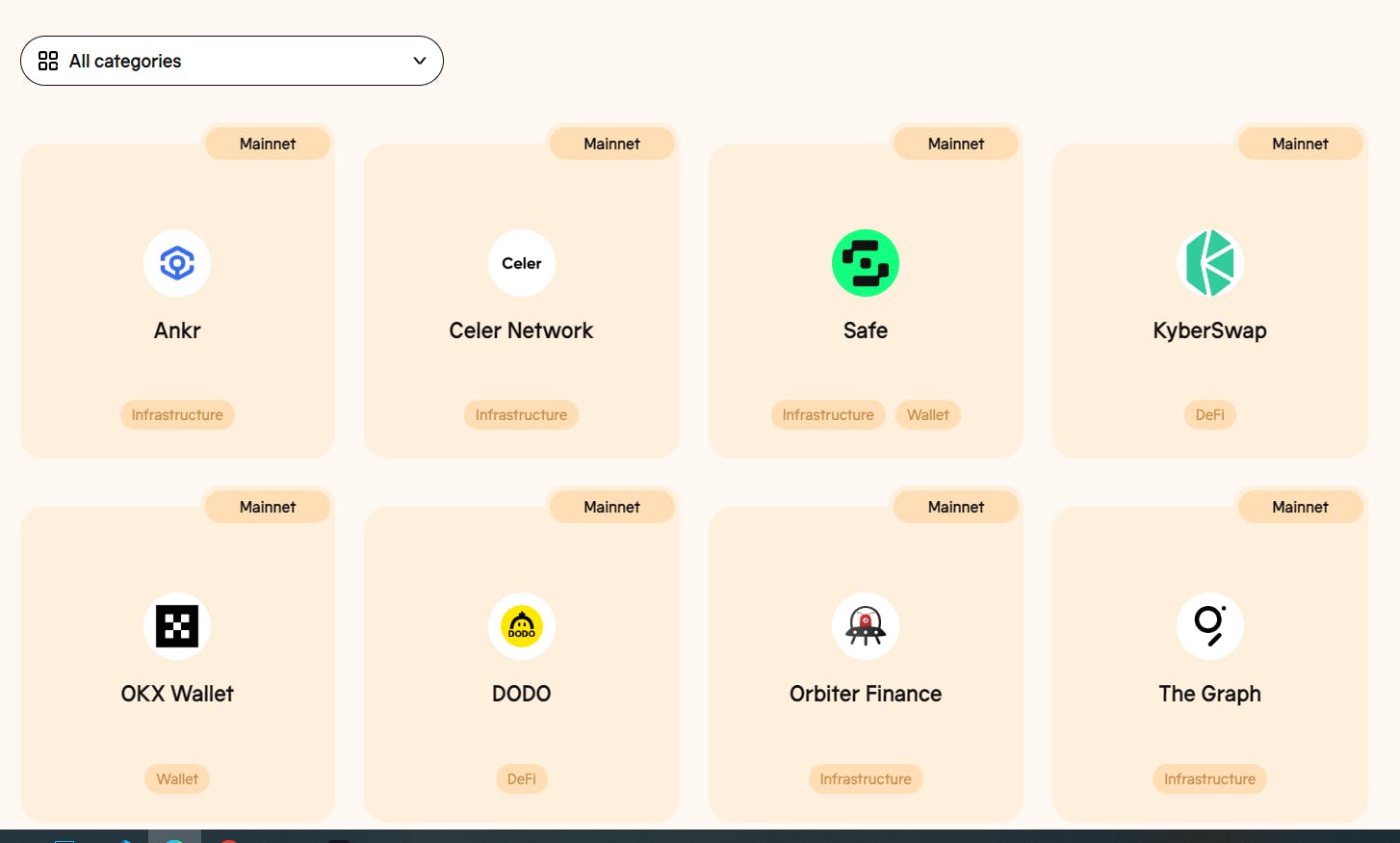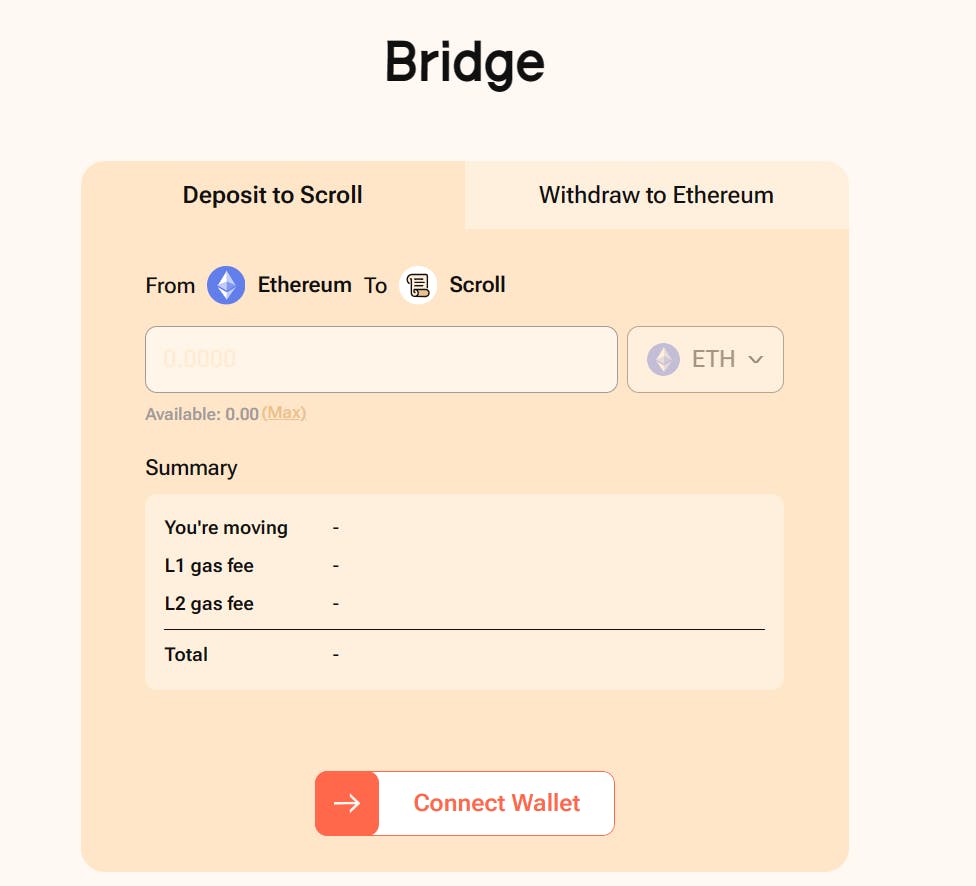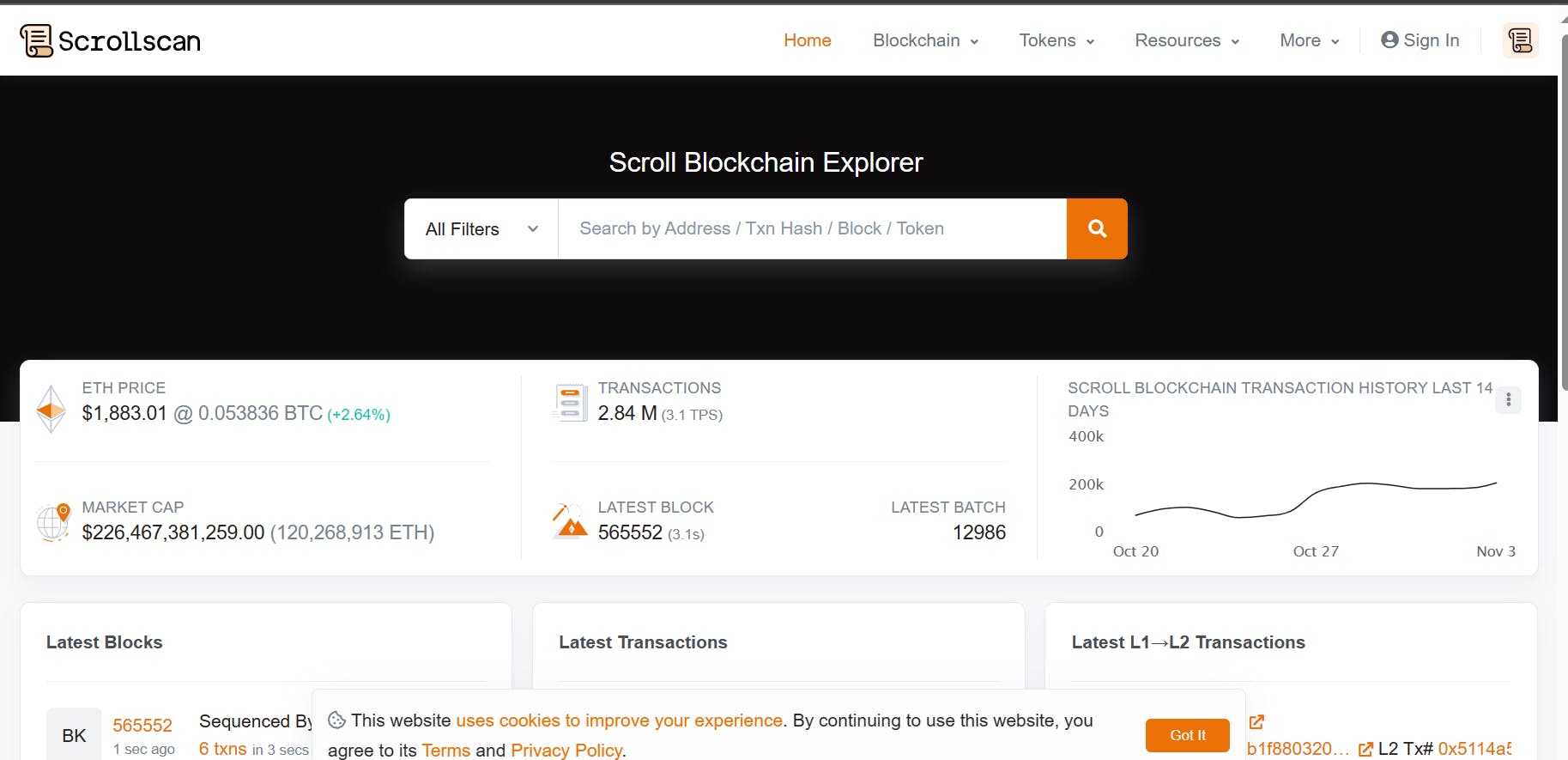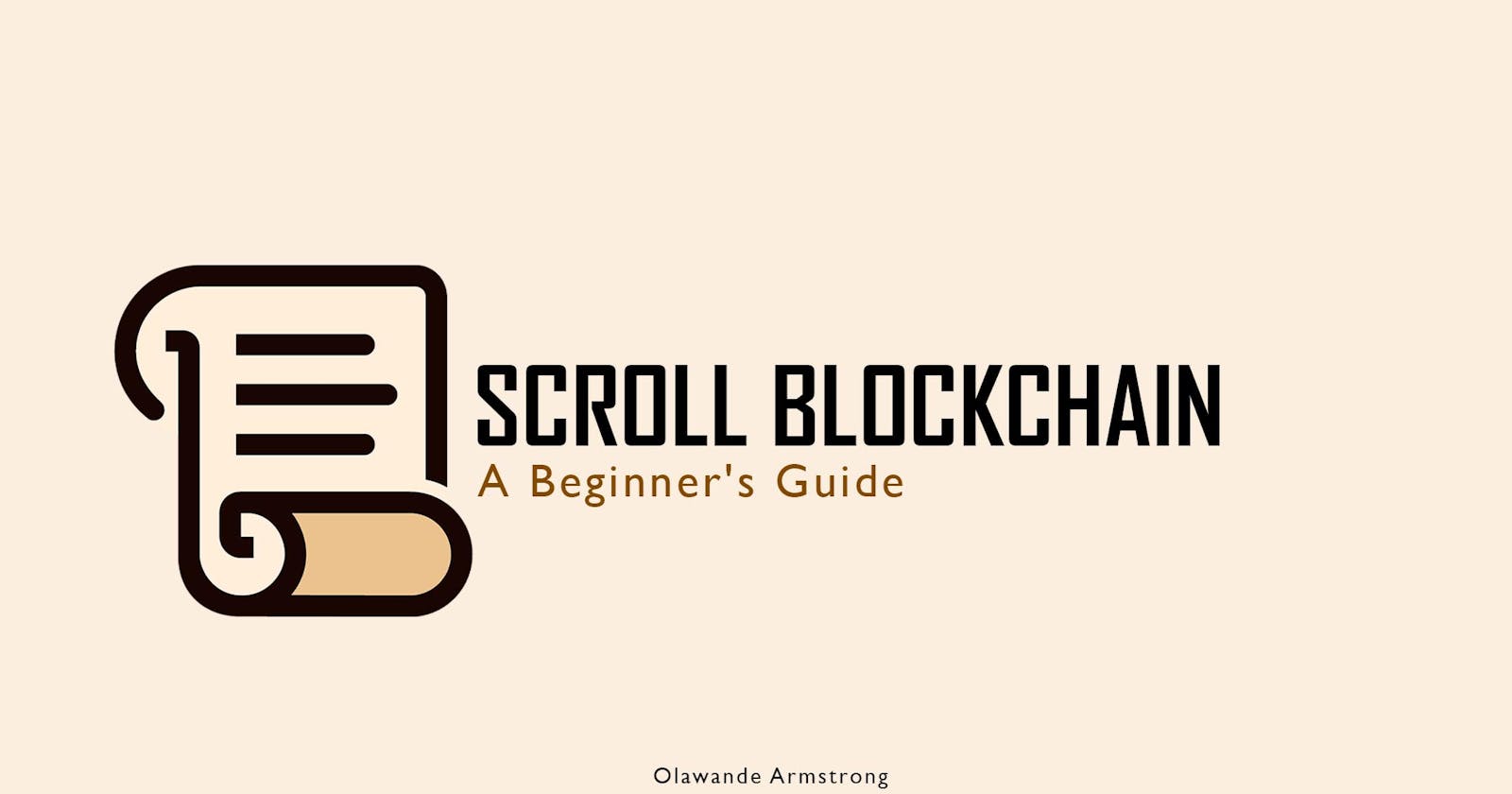Scroll Blockchain: A Beginner's Guide
A beginner-friendly guide that simplifies the complexities, offering a clear overview of how Scroll enhances Ethereum's speed and accessibility.

Scroll is a layer 2 scaling solution to the Ethereum blockchain that utilizes ZK technology, enabling faster and more efficient transactions while maintaining the security of the Ethereum blockchain.
One advantage of Scroll network is that it is more accessible, more responsive, and can support more users at once than Ethereum alone.
In simple terms, Scroll.io is a new technology that makes Ethereum faster and cheaper to use. It does this by bundling transactions together and processing them off-chain. This means that transactions can be processed much faster and for a much lower fee than on the Ethereum mainchain.
How does Scroll work?
To understand how Scroll.io works, it's helpful to first understand how Ethereum works. Ethereum is a blockchain, which is a distributed ledger that records all transactions. When you make a transaction on Ethereum, it is added to a block and then processed by the network. This process can take some time, and the fee for processing a transaction can be quite high.
Scroll.io solves this problem by bundling transactions together and processing them off-chain. This means that transactions are not processed by the Ethereum network directly. Instead, they are processed by a group of validators who are responsible for verifying the transactions. Once the transactions are verified, they are added to a block and then submitted to the Ethereum mainchain for finalization.
This process is much faster and cheaper than processing transactions on the Ethereum mainchain. Scroll.io transactions are typically processed in seconds and cost just a few cents in fees.
Here is an analogy that may help you understand how Scroll.io works:

Imagine that you are at a grocery store and you have a cart full of groceries. You could wait in line to pay for your groceries at the checkout counter. However, this would take some time. Instead, you could use a self-checkout kiosk. This would be much faster and easier.
Scroll.io is like a self-checkout kiosk for Ethereum transactions. It allows you to process your transactions off-chain, which is much faster and cheaper than processing them on the Ethereum mainchain.
Why is Scroll.io important?
There are many benefits to using the Scroll.io blockchain, including:
Reduced fees: It significantly reduces the cost of Ethereum transactions. For example, a typical Ethereum transfer can cost around $2-$5 in gas fees, while a Scroll.io transfer can cost as little as a few cents.
Increased speed: Transactions are processed much faster than Ethereum mainchain transactions.
Improved security: It inherits the security of the Ethereum mainchain. This means that Scroll.io users can be confident that their funds are safe and secure.
Access to more dApps: A growing number of dApps are being deployed on Scroll.io, giving users access to a wider range of applications.
Here are some specific examples of how Scroll can be used to improve the user experience of Ethereum:
Gaming: It can be used to make Ethereum-based games faster and more affordable to play. For example, It can be used to reduce the cost of gas fees for in-game transactions.
Decentralized finance (DeFi): Scroll can be used to make DeFi applications faster and cheaper to use. For example, Scroll can be used to reduce the cost of gas fees for swapping tokens or providing liquidity.
Non-fungible tokens (NFTs): It can be used to make NFTs more affordable to buy and sell.
Why Opt for Scroll in Development?
Efficiency: Scroll boosts Ethereum's performance securely. By using ZK Rollups, Scroll enhances Ethereum's blockspace, ensuring security while reducing network congestion. Zero-knowledge proofs verify transactions, allowing Scroll to handle more transactions without compromising decentralization.
Affordability: Scroll reduces user transaction costs by utilizing advanced technology to expand block-space and lower expenses in Ethereum's competitive environment.
Speed: It provides swift user feedback. Scroll mints blocks every 3 seconds, allowing finality for included transactions. This rapid pace opens new possibilities for on-chain interactions in various applications.
Alignment: Scroll shares Ethereum's values. Scroll aligns with Ethereum's principles of decentralization and community ownership.
Community: Scroll connects users and builders. With an active community, Scroll fosters connections between developers and users, encouraging valuable feedback for real-world applications.
Explore Scroll Ecosystem:

Scroll ecosystem offers more than just a platform; it's a purposeful journey. With permissionless freedom and unmatched flexibility, discover your unique role in defining Ethereum's future. No matter your interest or goal, Scroll provides the tools and inspiration you need. Explore diverse protocols, and contribute to what's next in the exciting evolution of Ethereum.

Exploring Scroll's Features:
Bridge:

The Bridge feature acts as a digital connector, enabling effortless token transfers between Ethereum's Layer1 and Scroll's Layer2. Imagine it as a secure and dependable bridge that enables the smooth transfer of assets between two distinct domains. Upon accessing the Bridge function, a user-friendly procedure, akin to completing a form, guarantees hassle-free transactions.
Rollup Explorer:

The Rollup Explorer serves as a window into the inner workings of Ethereum's Layer 2. It allows you to witness real-time confirmation of transactions and blocks from Layer2 being committed and finalized on Ethereum's Layer1. This tool provides transparency, allowing users to track the progress of their transactions, ensuring they are securely processed and validated within the Ethereum network.
L2 Block Explorer:

It is similar to the L1 Block Explorer, it offers detailed insights into your Layer2 transactions. By pasting your Layer2 transaction hash from MetaMask into Scroll's Explorer search bar, you can monitor the status, ensuring your Scroll-specific activities are accurately recorded and securely processed.
Documentation and Developer Quickstart:

The Scroll User Guide and Developer Quickstart are priceless resources. The User Guide provides detailed explanations of every feature, ensuring users understand the functionalities and utilities offered by Scroll. For developers, the Quickstart acts as a roadmap, guiding you through the integration of their preferred development tools with Scroll. It simplifies the process of building and testing smart contracts, ensuring developers can seamlessly contribute to Scroll's ecosystem.
Conclusion
In conclusion, Scroll stands as a groundbreaking solution to Ethereum's scalability challenges, utilizing innovative ZK technology to enhance the network's efficiency, speed, and affordability. By seamlessly integrating with Ethereum's Layer 2, Scroll creates a bridge between accessibility and security, revolutionizing the way transactions are processed. Its user-friendly features, such as the Bridge, Rollup Explorer, and L2 Block Explorer, empower users and developers alike to engage with the platform transparently and effortlessly. With a strong emphasis on community and alignment with Ethereum's core principles, It does not only addresses the current limitations but also paves the way for a more inclusive, accessible, and dynamic future for the Ethereum ecosystem. As the Scroll ecosystem continues to evolve, it promises a transformative journey, inviting users and developers to explore, innovate, and redefine the future of decentralized applications on the blockchain.
